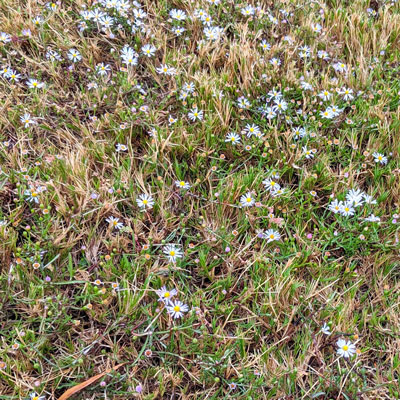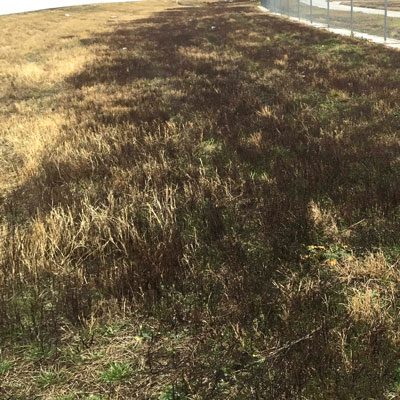Question of the Week – Number One: October 8, 2020

“What is this weed that suddenly appeared all over my lawn, and what can I do to get rid of it?”
This is roadside aster, and my comments won’t take very long.
What you need to know to get rid of it…
Eliminating this weed won’t be difficult, but you need to follow a few basic guidelines.
• Act quickly. It’s blooming today, and it will be setting seeds within a week or two.
• It’s a broadleafed plant (in spite of its very small leaves), so a broadleafed herbicide containing 2,4-D will eliminate the existing plants. These can be used on any type of lawngrass, but read and follow label directions to protect your other plants nearby.

• Roadside asters are “weeds of neglect.” They show up where our turfgrass is allowed to get too dry, too “hungry,” or is mowed infrequently.
• Therefore, your best way of preventing this weed is to take the best possible care of your lawn. Do that and roadside asters won’t make an encore appearance next year.
• Curiously, you’ll hardly notice this weed in your lawn during the summer, but its thick, deep green clumps will be there. It’s just that the small leaves won’t be very visible. But then the small, white flowers that look like tiny daisies will start to pop up all over the place – like someone has scattered popcorn out of an airplane.

• As soon as first frost kills the plants they will turn to black stubble that will be very uncomfortable, even dangerous for walking.
• All of which explains why you don’t want to let this little weed get a start in your lawn and landscape.
